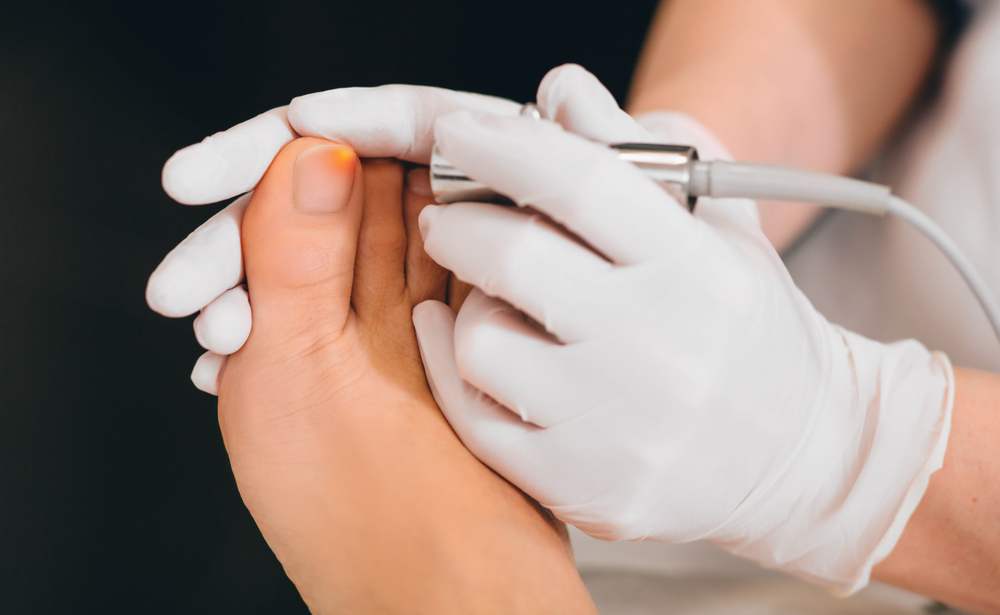Toenail fungus treatment methods come in a variety of forms, including oral antifungal medications, topical treatments, laser therapy, and home remedies. The most effective toenail fungus treatment depends on its effectiveness and how long it will take. Generally, the longer the treatment, the more likely it is to be effective. But if prevention is the goal, the treatment can be effective and cost-effective as well.
Table of Contents
Oral antifungal therapy

Oral antifungal drugs work by clearing up the infection faster than topical drugs. These drugs include itraconazole (Sporanox) and terbinafine. Usually taken for six to twelve weeks, oral antifungal drugs also help the new nail grow without infection. Depending on the severity of the infection, oral antifungal therapy may take up to four months to clear the infection completely.
Although a fungus infection may only affect the nail, it can negatively impact the person's quality of life and function. As an indication of a more serious infection, the doctor may prescribe a drug. The most common antifungal agents are terbinafine and itraconazole. Regardless of the drug, oral antifungal therapy is costly to the NHS, and the standard treatment period may be six months to a year.
Oral antifungal treatments for toenail fungus should be taken with caution. The medications may cause toxicity in the liver, but this condition is rare and is reversible when the medication is stopped. Liver function blood tests are recommended before and during treatment to monitor for liver toxicity. Drug interactions are also a concern for oral antifungal agents, which are often a prescription drug.
Another treatment option is olive leaf capsules. These work better than olive leaf salve and should be taken twice daily with plenty of water. A capsule containing olive leaf extract is available online. Some doctors recommend filing the surface of the infected nail to thin it. However, this approach is not recommended for all patients because some fungal infections do not respond to antifungal medications. A doctor may recommend a temporary or permanent removal of the infected nail.
For those who have already tried topical antifungal treatments, a doctor may prescribe a stronger, more powerful oral antifungal medication. The risk of side effects is lower than with topical antifungal medication, but oral medications are associated with the best chance of curing a severe fungal infection. Creams may also be used as an alternative. The best way to cure a fungal infection is to consult a doctor. An antifungal medication may be prescribed or applied directly to the infected nail.
Topical treatments
The first line of defense against toenail fungus is to understand its causes. Fungal infections are typically caused by a compromised immune system or by aging. It's important to see your doctor if the symptoms persist or if you suspect you have a more serious health condition. Fortunately, toenail fungus is not life threatening, and topical treatments can help you improve your appearance and feel better.
Currently, three prescription toenail fungus medications are available for sale. These options include older pills and newer topical solutions. Of these, the pill options have the advantage of cost. They're also less expensive, last for three months, and have higher efficacy. However, while topical solutions are less expensive, they have shorter-term effects. Regardless of which one you choose, you'll need to continue using the treatment until the fungus has been eliminated.
Topical treatments for toenail fungus are a great choice for people who don't want to undergo expensive surgery. However, they take time to work. While most prescription medications work well in the majority of cases, they often take months or even years. It's also important to keep in mind that toenails can take a year to completely grow back, so a longer course of treatment is necessary.
One topical solution for toenail fungus involves soaking your foot in hot water or Epsom salt for at least half an hour. This method is most effective if the soaking is done several times each day. Depending on the severity of the infection, the longer the soak time, the better. Besides topical solutions, other methods of treating toenail fungus include soaking the affected foot in a solution of vinegar, hot water, or Epsom salt.
Oral medications are another option for toenail fungus treatment. These medications work by delivering antifungal medication to the bloodstream. The risks of oral medications are greater than with topical solutions, however. They can cause liver damage and interact with other medications, so many patients opt out of them. The cure rate with these oral medications is about 60%. However, they are not suitable for all patients.
Laser treatment

The GenesisPlus laser, which kills the fungus, passes through the nail and surrounding tissue. The laser heats the pigment in the fungi, destroying them and causing the nail to grow normally. Laser treatment takes about thirty minutes per nail. It is painless and requires no downtime, and patients can return to normal activities immediately afterward. This treatment is only effective when repeated every six months. Patients should do their homework to maintain the treatment. This includes treating their shoes to reduce the risk of recurrence. Using a topical urea gel to treat their toenails will also help.
There are several downsides to topical treatments. Topical medications can cause side effects and only treat the surface of the nail. In addition, topical medications need to be applied on a consistent basis to be effective. Additionally, oral medications have limited effectiveness and rarely clear the infected nail immediately. Moreover, they don't penetrate the skin beneath the toenail, which makes them ineffective.
Compared to oral medication, laser treatment does not require anesthesia. In addition, this treatment is quick and painless, taking only minutes to complete. While a single treatment can clear up the infection in 60 to 65% of cases, some patients will require repeat treatments. To schedule an appointment, call the Sacramento Foot and Ankle Center. A qualified foot doctor will discuss your options and explain any potential side effects of laser treatment.
In addition to eliminating fungus, laser treatment also removes the damaged nail tissue. This procedure kills the fungus under the nail and prevents it from spreading. It can be effective in reducing the thickness and appearance of the infected nail and improving shoe-wearing comfort. This treatment is not medically necessary unless there are other factors that must be addressed first. Until the fungus is removed, proper hygiene is the first line of defense. Proper foot care and changing shoes on a daily basis can help.
There are several types of lasers available on the market. The most commonly used lasers are CO2 and YAG, both of which generate heat. These lasers are directed to the nail bed to kill the fungus and spare the surrounding tissues from excessive heating. In addition, the lasers will sterilize the surrounding tissue to prevent the growth of new fungus. Depending on the severity of the infection, laser treatment for toenail fungus may be beneficial for you.
Home remedies

Vinegar foot soaks can help cure toenail fungus. This home remedy is based on apple cider vinegar, which is known to have healing and antibacterial properties. The vinegar should be mixed with water and applied to the affected toenail area twice a day. If you prefer to use apple cider vinegar, you can substitute it with white vinegar. Mix one part vinegar with two parts warm water and soak your feet.
The oil contained in olive leaf contains oleuropein, which is an antifungal and antimicrobial compound. Applying a few drops of olive leaf salve on infected toenails daily can help reduce infection and treat toenail fungus. You can also take olive leaf extract capsules, which have antifungal and immune system boosting properties. One capsule twice a day can be enough for a month. It's advisable to consult with your health provider before taking olive leaf capsules.
Applying tea tree oil to the affected area may be effective, but it should be used with caution as it can cause stinging and extreme dryness. It may spread quickly and aggravate the infection. Regardless of the home remedy you choose, you should keep the infection in mind and take steps to maintain proper foot hygiene. After all, it can take a long time to heal even a mild case.
Baking soda is another natural home remedy for toenail fungus. It's an effective antifungal agent. Turmeric also has antiseptic properties, which can prevent the growth of fungal infections and cure them safely. Just make sure to leave it on your toenail for at least a day before washing. Using a baking soda foot paste once or twice a week can help you prevent and treat toenail fungus naturally.
A natural antifungal agent, tea tree oil, is another home remedy for toenail fungus. It has antifungal and antibacterial properties and can be applied directly to the nail on a daily basis. This method will improve the overall condition of the infected toenail. In addition, the oil will also help you keep the nail healthy. You can repeat the process daily until the infection is gone.


Leave feedback about this